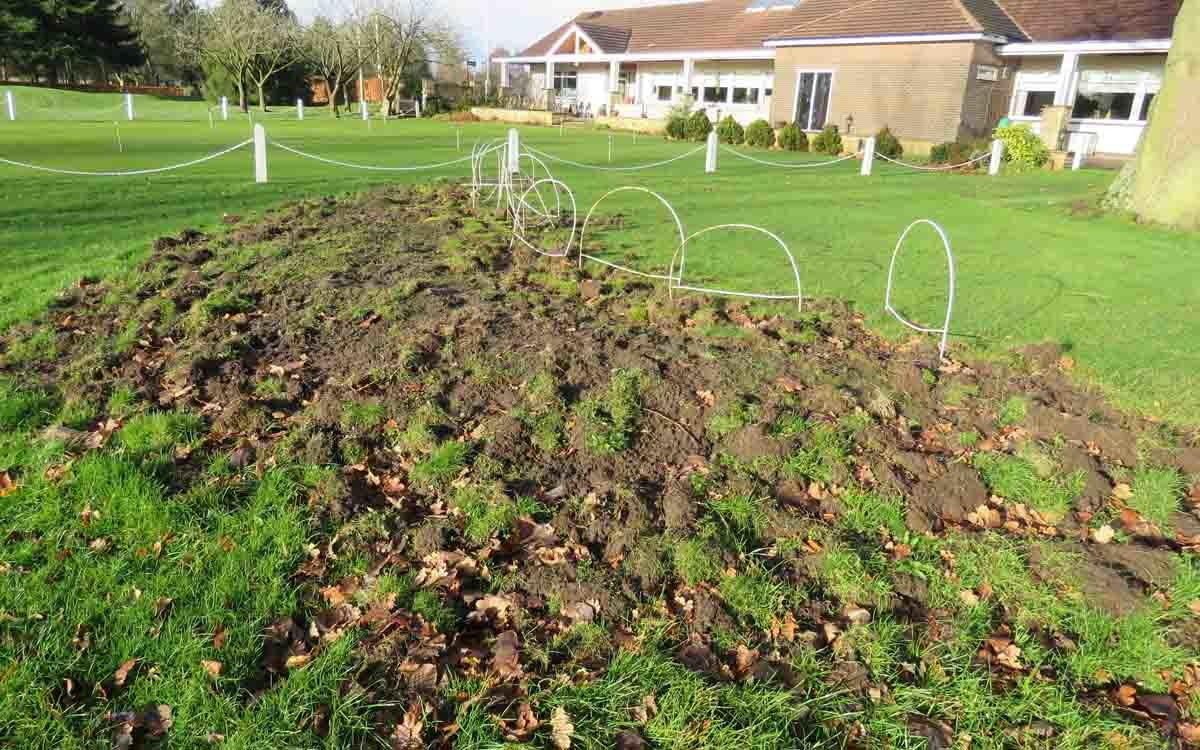BIGGA reveals its Coronavirus guidance for greenkeepers in England
BIGGA reveals some practices greenkeepers can put in place to make everyone stays safe and healthy...
.jpg?width=1600&aspect_ratio=16:9)
After a summer that saw glorious weather and fairways filled to the brim with golfers, winter is closing in. The days are getting shorter and infection rates are on the rise, writes BIGGA's Karl Hansell.
Golf clubs are a close community, with a small number of staff and volunteers working extremely hard to maintain a facility that provides enjoyment and relaxation to customers.
As the second wave of COVID-19 sweeps the country, we’re reminding members of the need to look out for each other.
Here are some practices that you can put in place to make sure everyone stays safe and healthy, taken from the Government’s Working safely during coronavirus (COVID-19) guidance.
Coming to and leaving work
- Stagger arrival and departure times to reduce crowding into and out of the workplace.
- Provide additional parking or facilities such as bike racks to help people walk, run or cycle to work where possible.
- Limit passengers in corporate vehicles. This could include leaving seats empty.
- Reduce congestion, for example, by having more entry points to the workplace.
- Use markings and introduce one-way flow at entry and exit points.
- Provide handwashing facilities (or hand sanitiser where not possible) at entry and exit points and don’t use touch-based security devices such as keypads where possible
- Use security access devices such as keypads or passes and adjust process to reduce risk of transmission. For example, clean pass readers regularly and ask staff to hold their passes next to pass readers rather than touching them.
Moving around buildings and worksites
- Reduce movement by discouraging non-essential trips within buildings and sites. For example, restrict access to some areas, encourage use of telephones or other electronic devices and clean them between use.
- Reduce job rotation and equipment rotation, for example, single tasks for the day.
- Implement one-way systems where possible on walkways around the workplace
- Use signage such as ground markings or being creative with other objects to help people comply with social distancing guidelines
- Reduce occupancy of vehicles used for onsite travel and when needed, social distancing measures should be followed within the vehicles.
- Separate sites into working zones to keep different groups of workers physically separated as much as practical.
- Reduce the number of people in attendance at site inductions and consider holding them outdoors wherever possible with social distancing.
- Manage use of high traffic areas, such as corridors and walkways, to maintain social distancing.
Meetings
- Use remote working tools to avoid in-person meetings
- Only absolutely necessary participants should physically attend meetings and should maintain social distancing guidelines
- Avoid transmission during meetings, for example, avoid sharing pens, documents and other objects
- Provide hand sanitiser in meeting rooms
- Hold meetings outdoors or in well-ventilated rooms whenever possible
Common areas
- Stagger break times to reduce pressure on break rooms or places to eat and ensure social distancing is maintained in staff break rooms
- Use safe outdoor areas for breaks
- Create additional space for breaks during bad weather by using other parts of the workplace freed up by remote working
- Reconfigure seating and tables to maintain spacing and reduce face-to-face interactions
- Changing rooms and showers
- Where shower and changing facilities are required, setting clear use and cleaning guidance for showers, lockers and changing rooms to ensure they are kept clean and clear of personal items and that social distancing is achieved as much as possible
- Introduce enhanced cleaning of all facilities regularly during the day and at the end of the day
Additional advice about communal areas is available here
Cleaning in non-healthcare settings outside the home
Surfaces and belongings can be contaminated with COVID-19 when people who are infectious cough or sneeze or touch them. Transmission of COVID-19 can occur when someone else then touches the contaminated surface or item.
Kitchens and communal canteens
As a matter of good hygiene practice, anyone handling food should wash their hands often with soap and water for at least 20 seconds before doing so. Crockery and eating utensils should not be shared. Clean frequently touched surfaces regularly.
Bathrooms
Clean frequently touched surfaces regularly. Ensure suitable hand washing facilities are available including running water, liquid soap and paper towels or hand driers. Where cloth towels are used, these should be for individual use and laundered in accordance with washing instructions
Laundry
Wash items in accordance with the manufacturer’s instructions. Use the warmest water setting and dry items completely. To minimise the possibility of dispersing virus through the air, do not shake dirty laundry prior to washing.
Clean and disinfect anything used for transporting laundry with your usual products.
Shift patterns and working groups
As far as possible, where people are split into teams or shift groups, fixing these teams or shift groups so that where contact is unavoidable, this happens between the same people.
Identify areas where people have to directly pass things to each other, such as shared tools, materials or job instructions and find ways to remove direct contact, for example by using drop-off points or transfer zones.
Minimise worker congregations at bottlenecks such as timeclocks, entrances and exits.
Assist the test and trace service by keeping a temporary record of your staff shift patterns.


